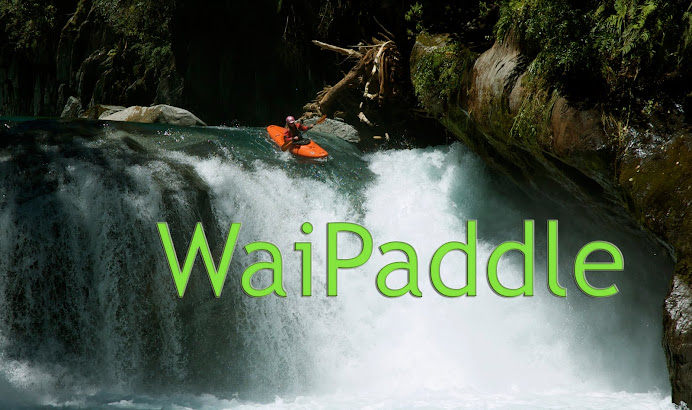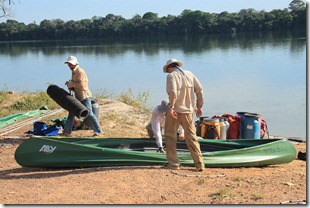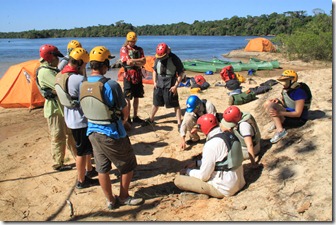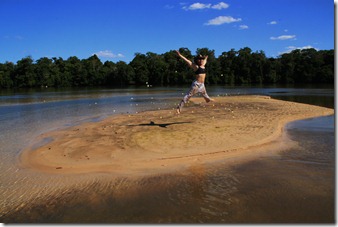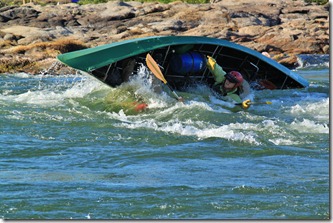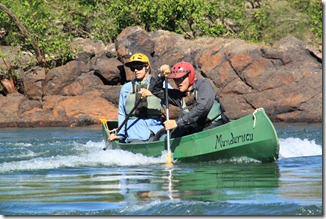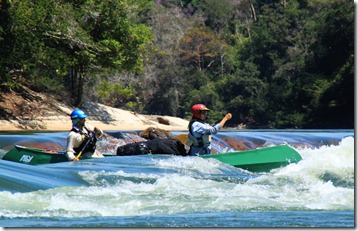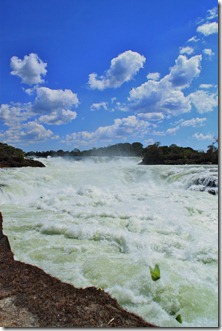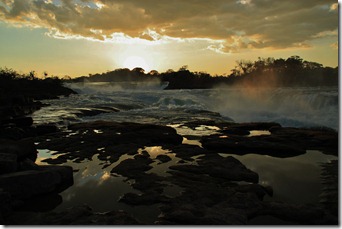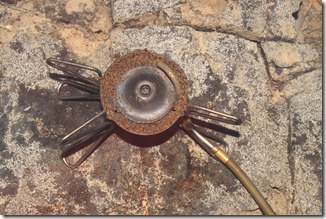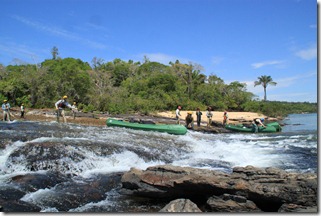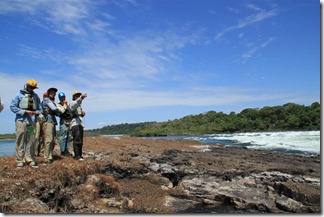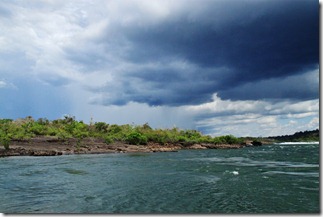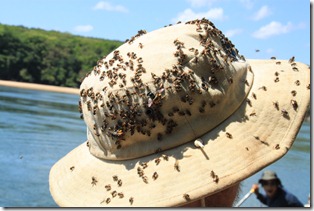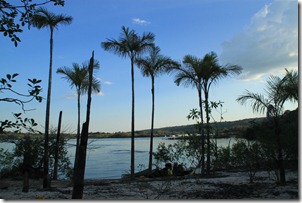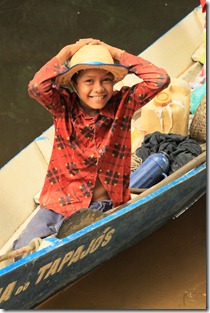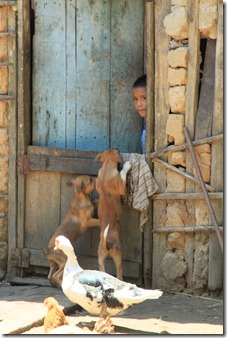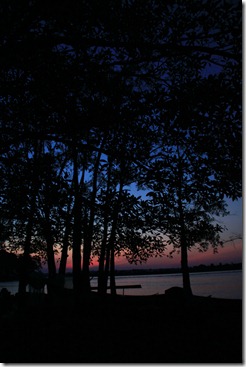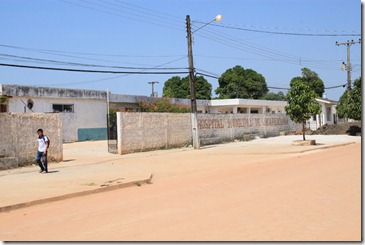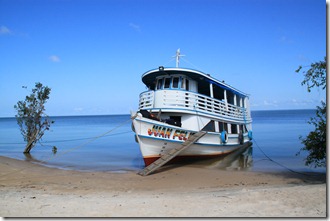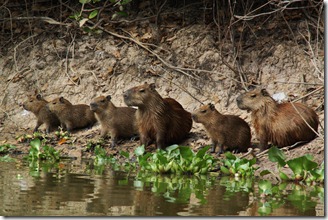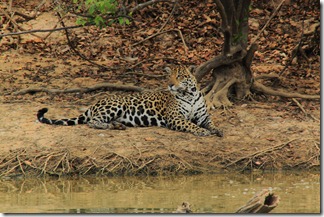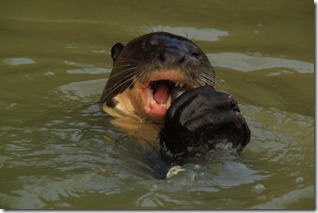Then there was getting the equipment and food together for the 40 days. This is no easy task in Brazil apparently we needed 40 zip ties per canoe just to hold the collapsible boats together.
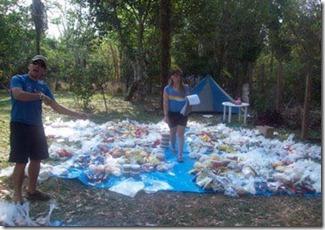
Organising the mountains of food for the trip
We were going to paddle down the Juruena into the Tapajoes then catch a boat from Jacareacanga down to the confluence with the Amazon at Santarem. The river at this time of year flowed at around 60,000 cfs and we would be covering a total of 600 km.
After meeting our students we did the best we could to give them an idea of how challenging a trip they were about to embark on. I don’t know if they fully understood but they were all still keen to come. So we loaded a bus with everyone and everything we would need and drove for two days towards the Amazon basin.
The drive was an adventure itself. I was surprised at how long it took us to get to the jungle, there were just cleared fields for miles. I was beginning to worry that maybe the jungle was being cleared faster than what we were approaching it as the illegal logging trucks kept passing as going the other direction.
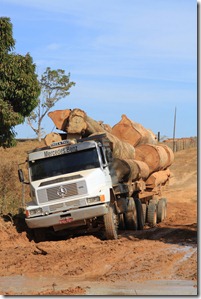
Would there be some jungle left time we got there?
At one point we got to a bridge that had been burnt down. Apparently this is what the locals do when a bridge gets too warn down. They burn it so a new one has to be built. Luckily they don’t mess around and a new one was built in a couple of hours as we watched on.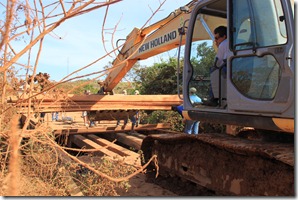
No bridge, no problem
Eventually the road disappeared into a river so we unloaded the bus, built our canoes, threw the mountains of gear we had in and herded the struggling beginner canoeists to an island to camp just as it got dark.
Now how do these things work?
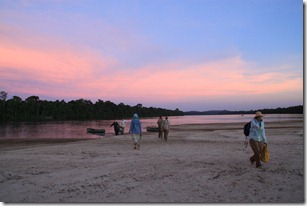
Home sweet home for the night
We had roughly ten days to teach our students how to camp and canoe. After that we would pass our last point that we knew we could run an evacuation from and enter the section of the ‘big six’. The big six are large rapids that we would need to be an efficient and competent team to portage, line and paddle our way through safely. 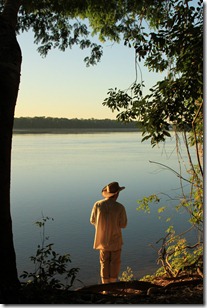
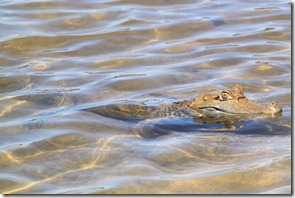
We were always being watched by something
‘Aggressive self care’ became a catch phrase of the trip as we tried to wash with antibacterial soap everyday, always keep ourselves dry, hydrated, covered from the sun and bugs.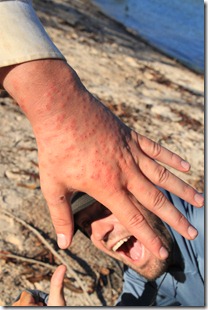
One hour without bug spray
Macaws
Lesson time
So many butterflies!
Also lesson time!
Looking good just in time
Before we knew it we were at the point of no return. We spent a few days above the pinch rapid that marked our entry into the most remote part of our journey. At this point one student choose to be evacuated by plane from the airstrip at a fishing posada. This also meant that we got to meet the locals that lived there. Which was an awesome experience to see what life is like living at the remote posada.
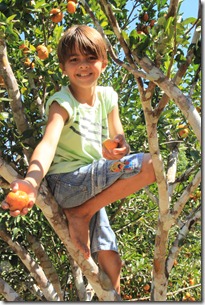
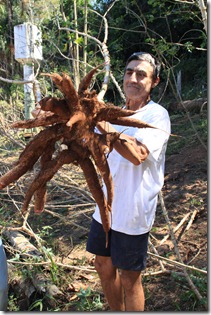
Staple food source the Manioc Root
So when we couldn’t put it off any longer we packed our boats and headed into the pinch rapid. It was to be the first time that we experienced paddling our boats fully loaded in big water. Would the zip ties hold?
Zip ties held the canoes together but we were definitely sitting low in the water.
The first of the ‘big six’ was Salto Augusto. Salto Augusto is one of the most amazing pieces of white water I have ever seen. For at least a kilometre out the roar of the rapid had me convinced that we were about to drop of the edge of the world every time we approached a corner. Luckily we all made it to the side above the rapid and unanimously made the decision to portage
(carry our canoes) around. We also decided to spend a lay over day here as it is an amazing place.
(carry our canoes) around. We also decided to spend a lay over day here as it is an amazing place.
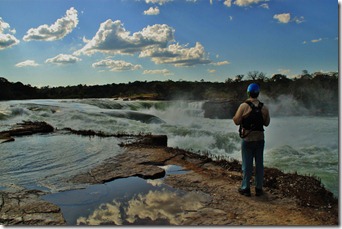
The journey through the big six was luckily pretty uneventful. It was a lot of hard work but good times and awesome scenery made it unforgettable.
One morning termites had taken over our stove. ‘Come on guys I just want to make coffee!’
Lining our way around a rapid
Yes it is a fishing spider
Where do we go now?
Stormy weather
Living with bees … just go to your happy place
The last of the big six
When we reached the bottom of the last huge rapid we entered the territory of the animals that couldn’t swim up the rapids. That included electric eels that are very territorial of their eddy, freshwater stingrays and the large caimin. We were also back where there were people, both settlers and indigenous tribes.

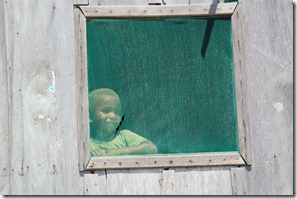
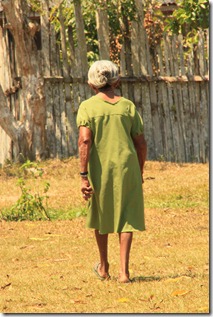
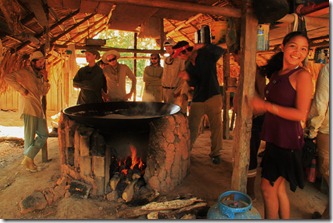
We were shown how to make manioc flour
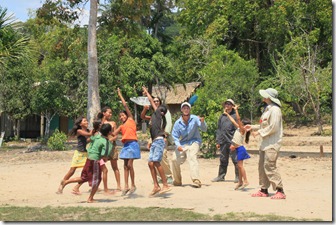
Teaching the kids how to throw a frisbee
Unfortunately somewhere I had picked up a parasite and by this stage I was beginning to be really sick. I had abdominal pain, was dizzy and extremely tired all the time. After two weeks feeling like this we made the call that I should be evacuated at the first possibility. This was both a relief and scary in itself. Life had been pretty miserable trying to keep paddling everyday in the heat while feeling sick. However the prospect of being evacuated by myself into a frontier town where no one would speak English was daunting. So at the first road head we paid a man to drive me to Jacareacanga. I would meet the group at the river in threes days when they paddled down to Jacareacanga.
My last sunset on the river
The ‘hospital’ of Jacreacanga
The hospital was a frustrating and frightening place as I tried to talk to the doctors in Portuguese with the help of a guidebook. I don’t think they ever really figured out where I had come from and what I was doing there. But after jabbing me with needles I think they told me that there was something wrong with my kidneys, gave me some pills and sent me on my way. I then spent the next three days hanging out by myself in what was a pretty sketchy town. Day light was pretty full on so I always made sure I was locked in my room time it got dark. Needless to say I was pretty happy to meet the group at the river when they got there. We then travelled by boat the rest of the way to the Amazon River itself.
I didn’t start to feel better before I was due to head out on my second trip so the call was made that I shouldn’t go out for round two. When I did start to feel better I went on a trip to the Pantanal and got to see some amazing wildlife.
Capybara Family
Jaguar!
Giant Otter
Brazil and the Amazon is an incredible place and I would love to go back one day. Hopefully no parasites next time though!
